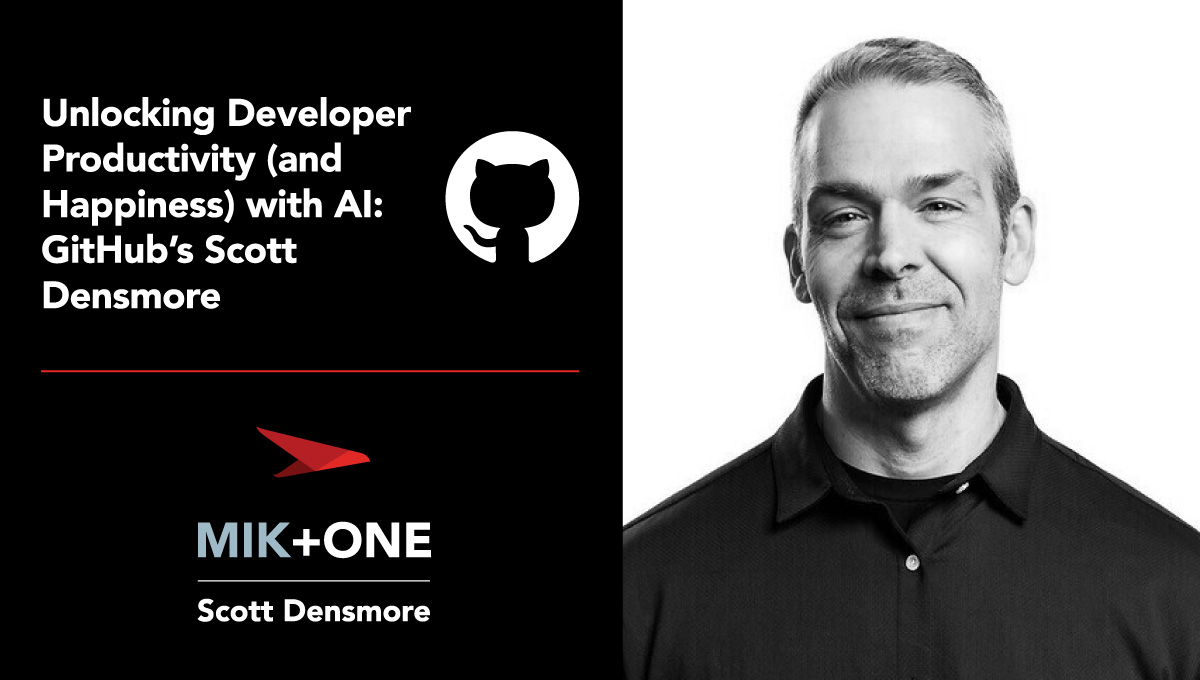
Nothing frustrates software developers more than working hard on something that never ends up providing value. Whether because of changing priorities, miscommunication among teams, or other blockers, the hidden cost of waste can significantly impact productivity and bottom lines.
The challenge lies not just in recognizing the presence of waste but in identifying exactly where resources are being inefficiently utilized. Without clear visibility into these areas, it becomes increasingly difficult to prioritize tasks effectively, ensuring that outcomes align with top business priorities.
In this blog, we’ll delve into the intricacies of calculating the hidden cost of waste in software development and explore strategies to mitigate its impact, ultimately leading to a more streamlined and outcome-driven development process.
The Six Hidden Costs of Software Development
Resource waste is a pervasive issue that can significantly hinder productivity, efficiency, and the achievement of business goals. Understanding the common areas where waste occurs is the first step toward mitigating its impact. Here are six key areas where resources are often squandered:
1. Misaligned Work
Misaligned work occurs when tasks are not directly aligned with an organization’s highest priorities, often due to unclear communication or poor understanding of these priorities. This misalignment disrupts the entire workflow, causing upstream teams to wait and downstream teams to deal with non-prioritized outputs, slowing down the organization.
Another reason for misalignment is teams working on lower-priority items due to blockers and continuing with them even when higher-priority tasks become available. To manage this, it’s crucial to prioritize high-priority work, allocate more planning to feature work that supports strategic goals, and ensure planning capacity aligns with strategy, focusing on both Flow Load and Flow Distribution, to reduce waste and improve efficiency.
How to reduce this type of waste
To reduce misaligned work, organizations must clearly define, communicate, and ensure understanding of their strategic goals at all levels. Leaders should cultivate a culture where strategic objectives guide all work, and regularly align roadmaps and tasks with these goals using solutions like Planview Roadmaps. Teams should be encouraged to reassess their tasks in relation to company priorities and shift focus when necessary.
Adopting a flexible approach to project and product management allows for quick pivoting away from lower priority tasks towards high-value work. Planview Viz supports these efforts by providing a visualization of the work process, allowing teams to monitor their Flow Load and Flow Distribution in relation to strategic goals. By utilizing solutions like Planview Viz, organizations can prioritize and execute tasks aligned with their strategic priorities, maximizing efficiency and driving success.
2. Excess Work in Progress
Excess work in progress (WIP) is work queued beyond what can be reasonably processed during a planning period, often due to lack of visibility into the current backlog (Flow Load) and limited understanding of how load affects team productivity. The absence of tools to manage and monitor workload exacerbates this, leading to excessive multitasking and reduced efficiency. Multitasking can result in a cluttered workflow, with tasks started but not finished on time, creating a growing pile of WIP that becomes difficult to manage.
Without a clear priority system or limits on concurrent tasks, teams can become overwhelmed, causing delays in project timelines. The lack of immediate cost or perceived penalty for adding more work, coupled with the absence of a systematic approach to track and limit WIP, allows work to accumulate unchecked, becoming a silent stressor. Additionally, underestimation of the time and resources required for tasks leads to overcommitment and bottlenecks in the production pipeline.
How to reduce this type of waste
To reduce excessive work in progress (WIP), setting WIP limits may not be enough. WIP must be managed on a team-by-team basis and scaled based on historical production rates. Agile methodologies, with their emphasis on iterative development and continuous delivery, along with regular retrospectives and planning sessions, can help teams adjust their processes and workloads in real time.
Implementing Value Stream Management (VSM) practices allows for more effective measurement and management of WIP. It is recommended to keep WIP (Flow Load) at about 1.5 times the amount that can be produced in a period (Flow Velocity). This helps avoid the accumulation of unmanageable work due to multitasking. Enhancing visibility across projects with tools like Planview Viz can provide real-time insights into workflow, helping teams track their Flow Load and Flow Velocity, identify bottlenecks, and adjust workloads accordingly. These measures can improve communication and collaboration, minimize the risk of burnout, and ensure a smoother path from development to delivery.
3. Rework
Excessive rework in technology organizations often stems from a combination of factors, including unclear requirements, poor communication between stakeholders, developers, and testers, inadequate testing and quality assurance practices, and technical debt. This rework is distinct from incremental improvement, which enhances value delivery based on customer feedback.
The organizational culture and processes also play a role; a rush to deliver features without adequate attention to quality, lack of collaboration and knowledge sharing among teams, and the absence of continuous integration and delivery practices can all contribute to excessive rework. Addressing these issues is crucial to prevent rework and ensure the software’s maintainability and performance.
How to reduce this type of waste
To reduce excessive rework, a comprehensive approach that addresses the root causes is essential. Improving the clarity and communication of requirements from the outset can reduce the likelihood of errors in the development process. Investing in robust testing and quality assurance practices can help catch issues early, preventing them from escalating into larger problems. Regular feedback loops facilitate early detection and resolution of issues.
Tools like Planview Viz can enhance the organization’s ability to reduce rework by providing insights into the flow of work, identifying bottlenecks, and visualizing the distribution of different types of work. By tracking the percentage of total work effort spent on rework, organizations can make more informed decisions and allocate resources effectively. Leveraging the capabilities of Planview Viz can lead to a more streamlined and effective development process, minimizing rework and maximizing productivity.
4. Demand and Capacity Mismatch
A mismatch between demand and capacity is a form of waste that occurs when one step in a connected work process operates at a pace that is either too fast or too slow for the subsequent step to handle, often due to overproduction. For example, if Team A produces 10 items in a period but Team B can only consume eight, the excess two items become wasted effort. This imbalance can lead to a significant backlog over time.
The main reason for this mismatch is the varying speeds at which different teams produce and use work. Trying to maximize the efficiency of individual teams without considering the impact on other teams can exacerbate the issue. In the technology sector, where work isn’t automatically aligned like in a factory assembly line, it’s crucial to monitor the pace of work (Flow Velocity) and the interdependence of different parts of the process.
How to reduce this type of waste
To reduce the mismatch between demand and capacity, organizations should align their resources with their workload through effective planning, prioritization, and continuous monitoring of workloads and resource availability. Utilizing Flow Metrics from platforms like Planview Viz provides crucial insights into workflow and production rates, enabling organizations to visualize their processes, locate bottlenecks, and determine where resources are being overused or underused.
Planview Viz helps measure Flow Efficiency, the ratio of active work to waiting time, allowing teams to identify and mitigate overproduction and align demand with capacity more effectively. By analyzing this data, organizations can make informed decisions to adjust their strategies, redistribute resources, and ensure that demand and capacity are aligned, leading to improved efficiency and productivity.
5. Repetitive and Manual Effort
Repetitive and manual work in software development refers to tasks that are routine, low-value, and can be feasibly automated due to their high frequency and low variability. These tasks, such as manual testing, routine data entry, and repetitive configuration or deployment tasks, consume valuable time that could be better spent on innovative and high-value work, like feature development or addressing complex technical issues that align with strategic objectives. Automating these mundane activities can free up the software development team to focus on tasks that require their unique skills and contribute more significantly to the organization’s goals.
How to reduce this type of waste
Reducing wasted repetitive and manual effort in software delivery can be achieved by focusing on toolchain integration and VSM. Integrating tools used in the software delivery process, like Planview Hub, can significantly reduce manual effort by enabling seamless data flow between connected tools and automating repetitive tasks such as code integration, testing, deployment, and monitoring. This not only speeds up the delivery process but also reduces the chances of human error.
VSM is key to identifying and eliminating waste, including unnecessary manual work, by mapping and analyzing the value stream to pinpoint areas where manual effort is concentrated and prioritize work that delivers the most value to the customer and aligns with business objectives. Flow Metrics, such as Flow Time and Flow Velocity, monitored through solutions like Planview Viz, help teams identify bottlenecks and areas with high manual effort, allowing them to measure the impact of improvements. Implementing these strategies leads to a more efficient and agile delivery process, enabling teams to quickly respond to changes and deliver higher-quality software.
6. Aged and Canceled Effort
Aged or canceled work in software development often arises from shifting business priorities, poor project planning and management, communication breakdowns between teams, and a lack of flexibility in the development process. Shifting priorities can render tasks outdated or irrelevant as the project evolves, while poor planning and management can lead to unclear or unprioritized tasks.
Organizations that struggle to break work down into smaller, quickly executable portions often commission new work before completing previous tasks, leading to aged work that remains “in progress” for extended periods. Misaligned goals or misunderstandings about requirements can result in work being abandoned, and a lack of flexibility can prevent timely adaptation to new information or feedback, causing work to become obsolete before completion. Addressing these issues is crucial to minimizing the impact of aged and canceled work on resources and project timelines.
How to reduce this type of waste
To address waste from aged and canceled efforts in software development, it’s essential to simplify and reduce the size of work units to increase the likelihood of completion before new initiatives arise. Establishing a formal planning process to limit new work when work in progress is high is also crucial. A comprehensive approach that includes VSM, Flow Metrics, and toolchain integration is vital for success.
VSM helps visualize the software delivery lifecycle, pinpoint bottlenecks, and align work with strategic objectives. Flow Metrics allow organizations to track software delivery progress and health, focusing on value flow, lead times, and the impact of stalled or discarded work, enabling proactive addressing of inefficiencies. Integrating the entire toolchain with a solution like Planview Hub ensures seamless information flow and work item coordination, allowing for swift resource and effort realignment when priorities change. Collectively, these strategies foster a robust development environment that minimizes waste, enhances efficiency, and maximizes valuable software delivery capacity.
The Planview Software Development Waste Calculator
The six hidden costs of waste in software development – misaligned work, excess work in progress, rework, demand and capacity mismatch, repetitive and manual effort, and aged and canceled effort – can significantly impede efficiency, productivity, and alignment with strategic objectives. By addressing these areas of waste, tech organizations can enhance their software delivery capabilities, leading to improved outcomes and success in the dynamic world of software development.
The Planview Software Development Waste Calculator is a powerful tool designed to help organizations assess the extent of wasted or misaligned effort within their software development teams. By transforming your development strategy and maximizing team efficiency, this calculator enables you to align your efforts more closely with top business priorities. Drawing on insights from 49 organizations and over 6,400 value streams collected over the last five years, the Waste Calculator offers a comprehensive analysis of the key drivers of waste in software development.
With this tool, you can gain a clearer understanding of where your development process may be falling short and identify areas for improvement. Whether it’s misaligned work, excessive work in progress, or any of the other hidden costs of waste, the Waste Calculator provides a detailed breakdown of the issues affecting your team’s efficiency. By uncovering these areas, you can develop targeted strategies to optimize your development processes, reduce waste, and ensure that your team’s efforts are contributing effectively to your organization’s goals.
To get started on identifying and reducing waste in your software development process, try the Planview Waste Calculator today and take the first step towards a more efficient and productive workflow.




